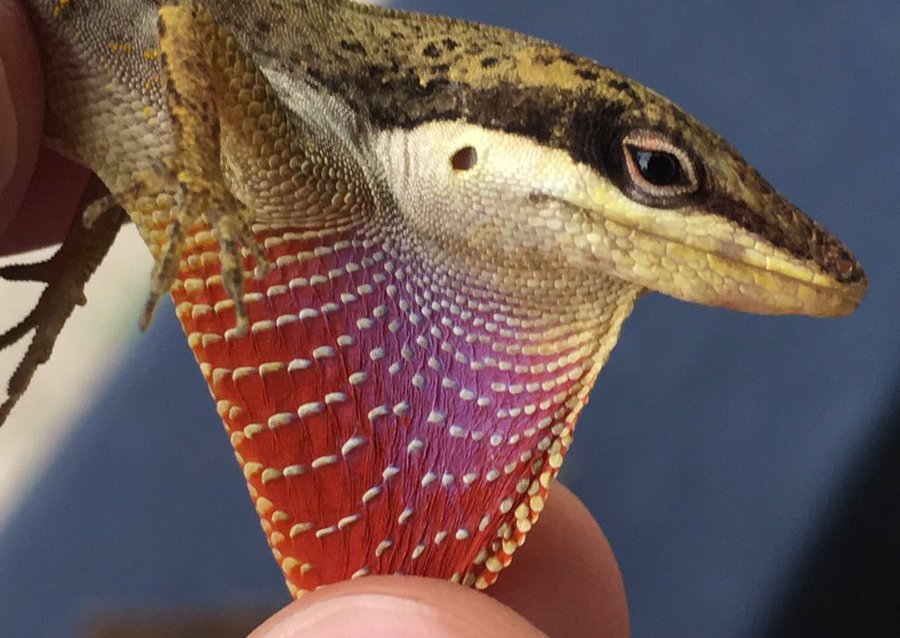![Anolis alutaceus [image] | EurekAlert! Science News](https://i0.wp.com/www.eurekalert.org/multimedia/pub/web/23297_web.jpg?resize=400%2C600&ssl=1)
Photo: Luke Mahler
Hey there!
I’m really into these tiny anoles now, and I promise we will venture next week, but for right now. I would like to talk about Anolis alutaceus.
Anolis alutaceus, also known as the Blue-eyed grass-bush anole or Monte Verde anole, is a forest-dwelling Cuban anole that can also be found on Isla de Juventud. It is one of the anoles in the alutaceus series of 14 closely related Cuban grass-bush anoles.

Photo by Yasel Alfonso, iNaturalist
They have a sizable pale yellow dewlap, and tan brown bodies with a lateral striping running from shoulder to vent, as well as diamond patterning on their backs. Monte Verde anoles have a SVL of around 37.5mm. They can be found close to the ground on the skinny surfaces their body plans are suited for, and like many of the other anoles in their ecomorph, they move mostly by jumping.

Photo by Alex Alfil, iNaturalist







